 With the Logitech G Pro you want to round off the current portfolio upwards and make everything a little better. But can this really succeed? We are testing the 99-euro headset, which, like the Kingston HyperX Alpha, follows the current trend towards double-chamber technology, in detail, of course.
With the Logitech G Pro you want to round off the current portfolio upwards and make everything a little better. But can this really succeed? We are testing the 99-euro headset, which, like the Kingston HyperX Alpha, follows the current trend towards double-chamber technology, in detail, of course.
This technology is not new in itself, because those who know our tests have already seen some examples where the drivers once again sat in their own separate chamber and the manufacturers used various openings to show the resulting sound character. have influenced. We will of course disassemble the headset later as usual and go on a detailed search.
Unboxing and scope of delivery
In the solid box are the headset, a lapel microphone, a approx. 2 m long connection cable with control unit and a combined 3.5 mm jack connector for headphones and microphone, as well as 11 cm short splitter as dividers on the separate 3.5 mm jack plugs for headphones and microphone.
The cast-in plugs or Sockets are each approx. 3.3 cm long, although we did not take their length into account in the measurements. The cable is textile-coated and relatively soft. All this is completed by the quick guide and a set of changeable ear pads with a different style of leather imitation.
Optics, feel and comfort
Visually, the headset doesn't really notice, but this doesn't have to be rated negatively. The shells of the earcups are made of matt black ABS injection molding and a G-logo in white printed on the two backs. From a purely visual lynot, it's all (almost too) coherent. Logitech has thankfully dispensed with a cheap effect-hating and the obligatory LED garlands.
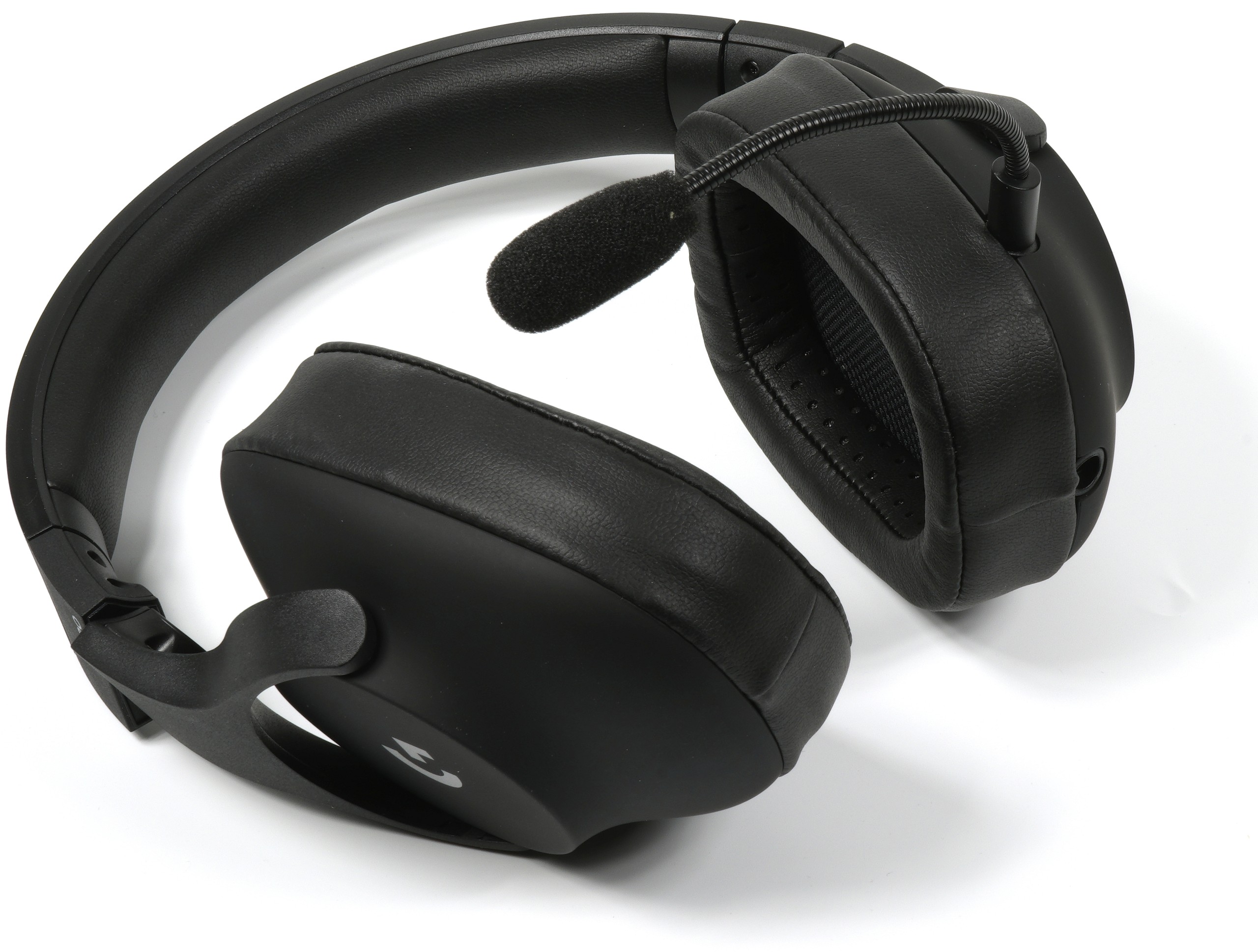 |
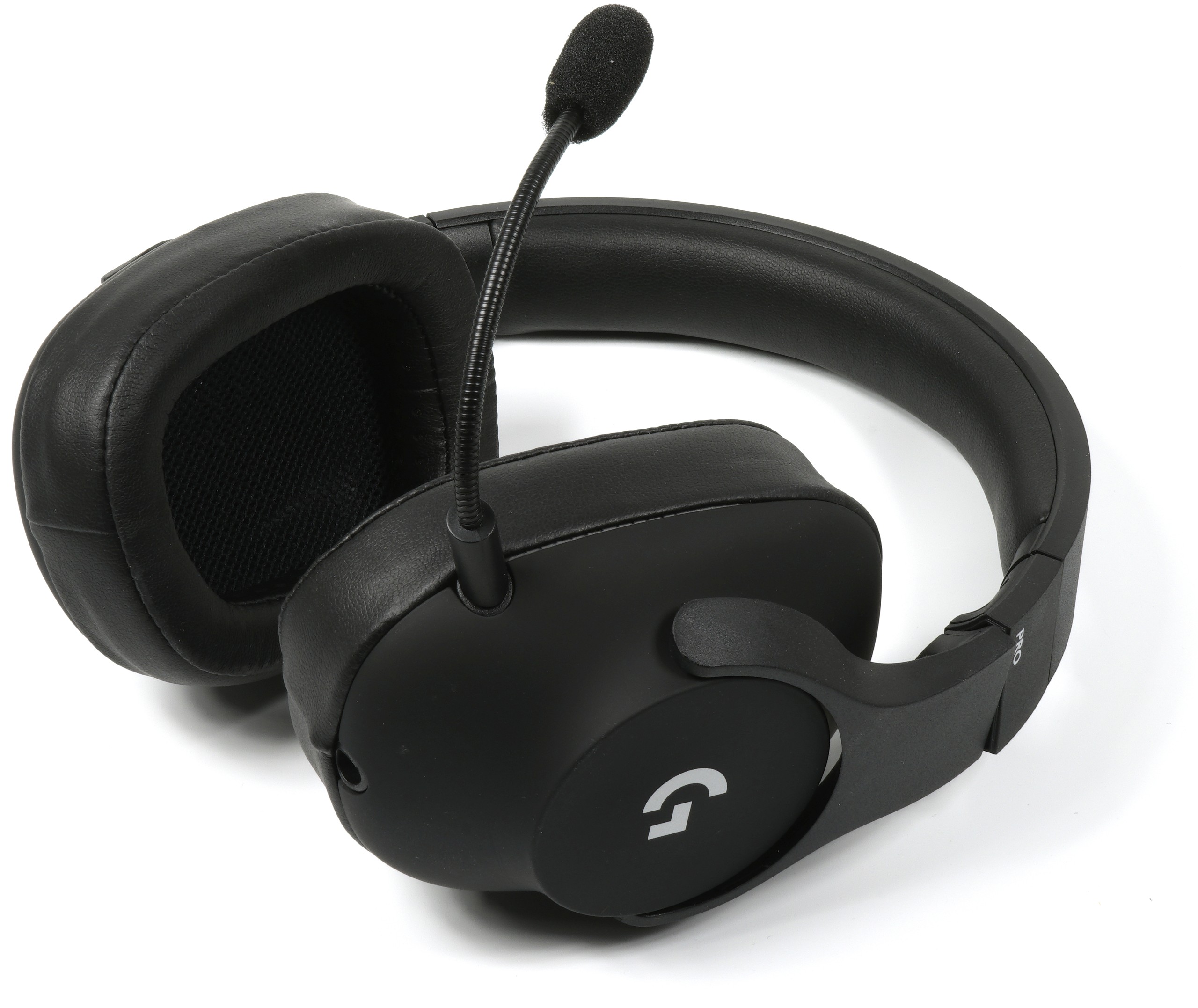 |
Overall, the processing seems acceptable, but not above average, and you are at the level of the Roccat Khan Pro we recently tested. At just under 273 grams, the headset is nuptical without the cables (but with a microphone).
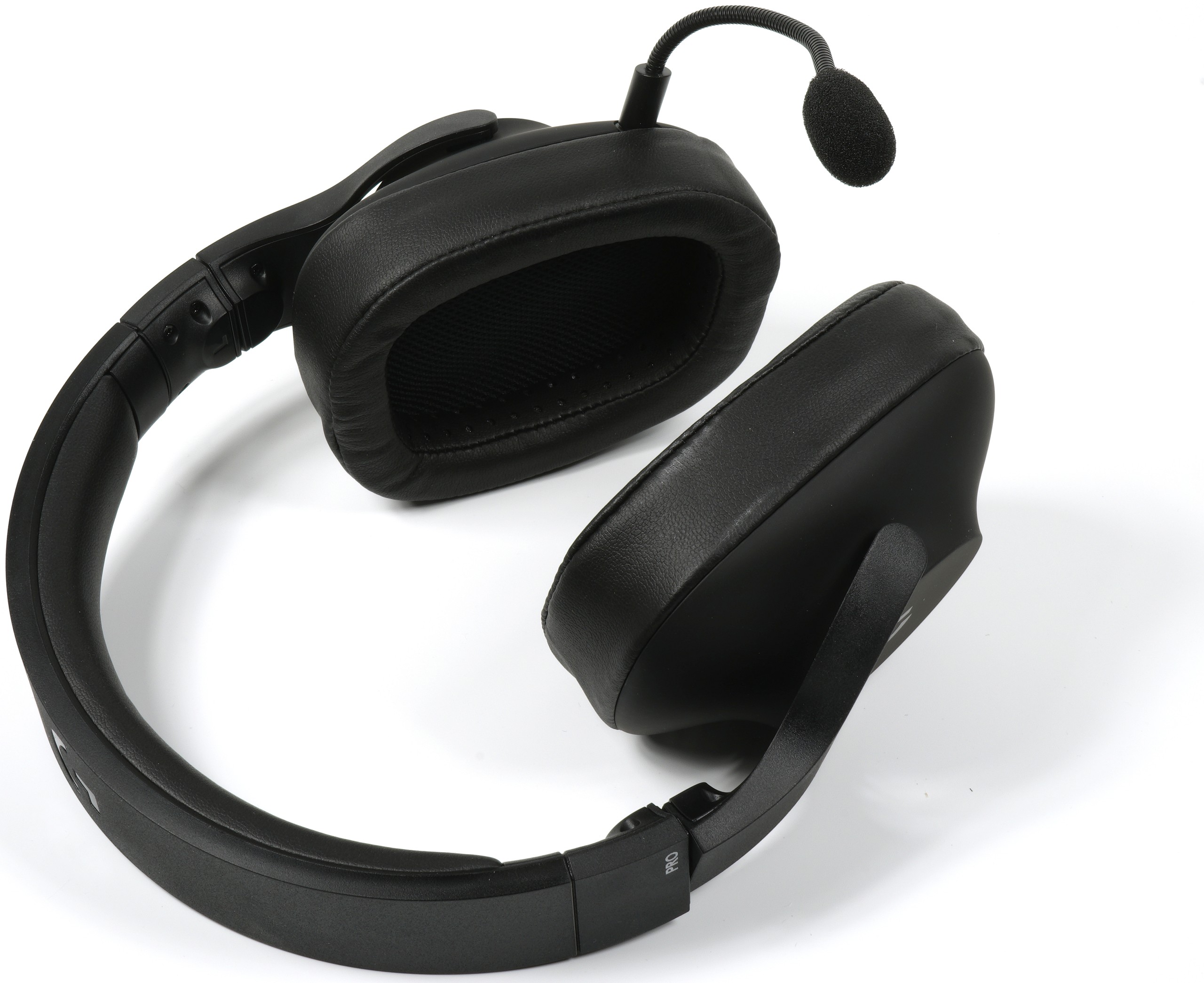 |
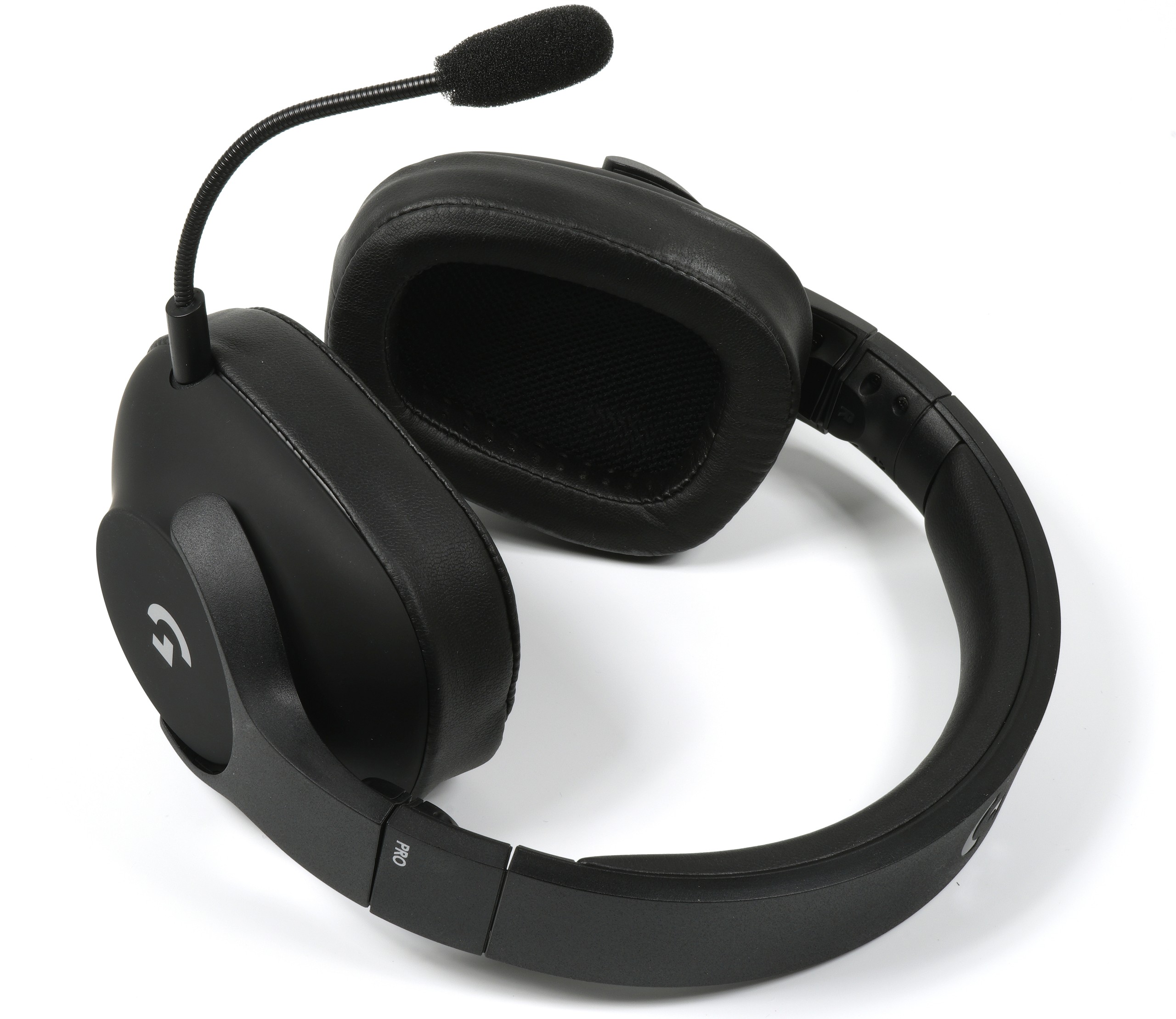 |
The adjustment of the headband and the necessary mechanism are time-tested. Pulling out and pushing in are accompanied by a tactile feeling for the individual steps. The possibility of variation is sufficiently dimensioned and the resulting fit is therefore a real benefit for both very small and very large heads.
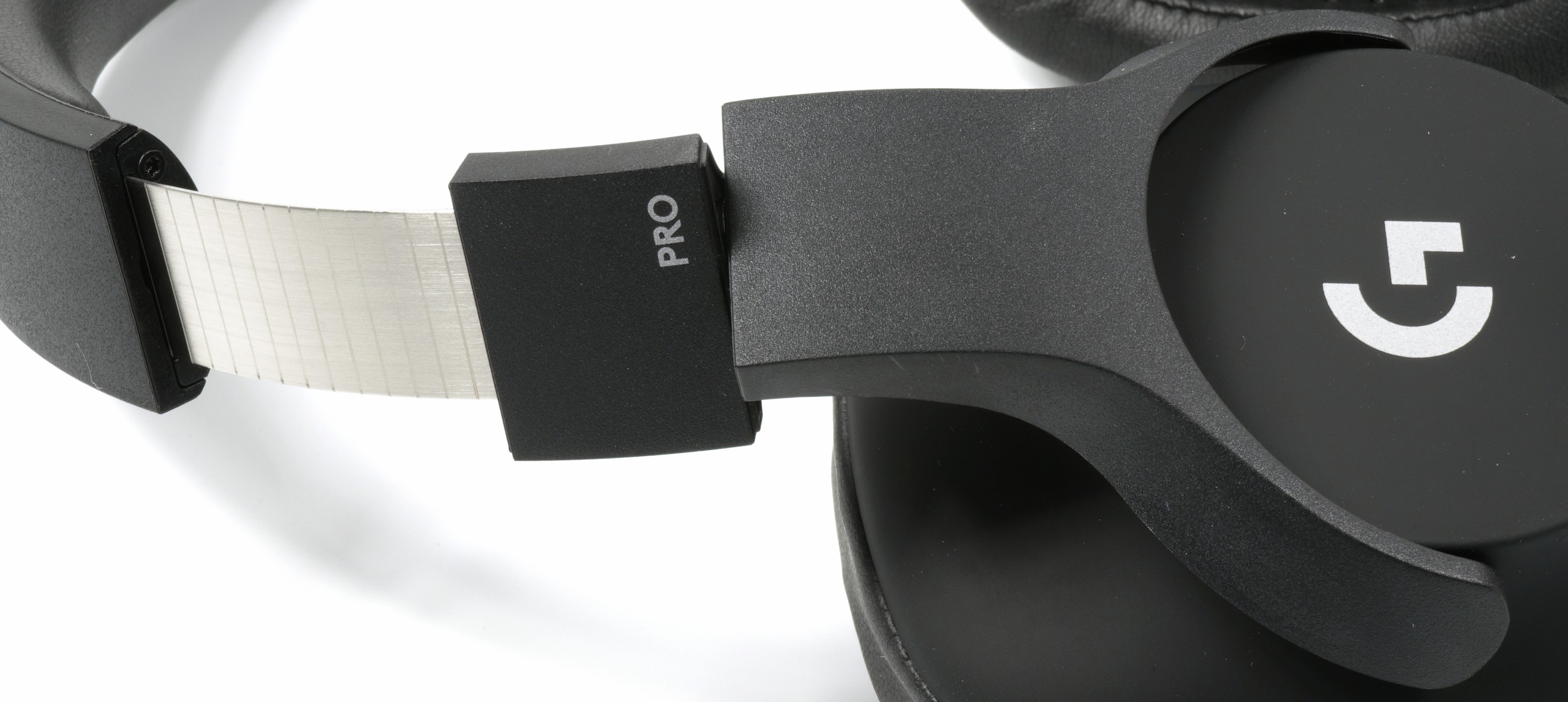
The joint mechanism relies on two real axes. This works really well in practice and you can make it very easy to adapt to your own head shape. Logitech specifies nylon as a material, which is compact polyamide, which is significantly more durable than the ABS (acrylonitrile-butadiene-styrene copolymers) of the shells.
The comfortable headband is upholstered in the middle with foam and covered with imitation leather from PU. This upholstery could have been a little more massive. Here Logitech specifies TR90 as a very flexible plastic for the outer frame around the handle as steel. ABS would break terrific here.

The removable ear pads in the factory state use the same material and are suitable for long-term use. The quilted seam at the outer edge also ensures that wrinkles on the outside of the fabric are avoided, so that the cushions always finish sufficiently and neatly. These are small things that not every manufacturer pays attention to. The textile inner covering is wrinkle-free and thin enough not to negatively affect the sound.

Logitech also offers interchangeable pads with a slightly rougher surface. Nevertheless, it is only an imitation and not suede. We will come back to the acoustic characteristics of the ear pads later.

The foam rubber padding inside is abundantly stable and tight, but still sits quite pleasantly. So it all ends very well. At least you never have the feeling of an old, soaked sofa, but a rather crisp appearance. Fits like that.
Functionality
The Logitech G Pro is wired and therefore has a control unit with volume control and a slide switch for the mute function of the microphone. The wheel of the volume control is grippy and intuitively accessible, the large mute switch is also accessible.

The cables, like the microphone, are completely removable. The plugs are stuck, but you need relatively little force to plug them in or Extract. The microphone has an additional nose in the plug to ensure position and correct assignment.
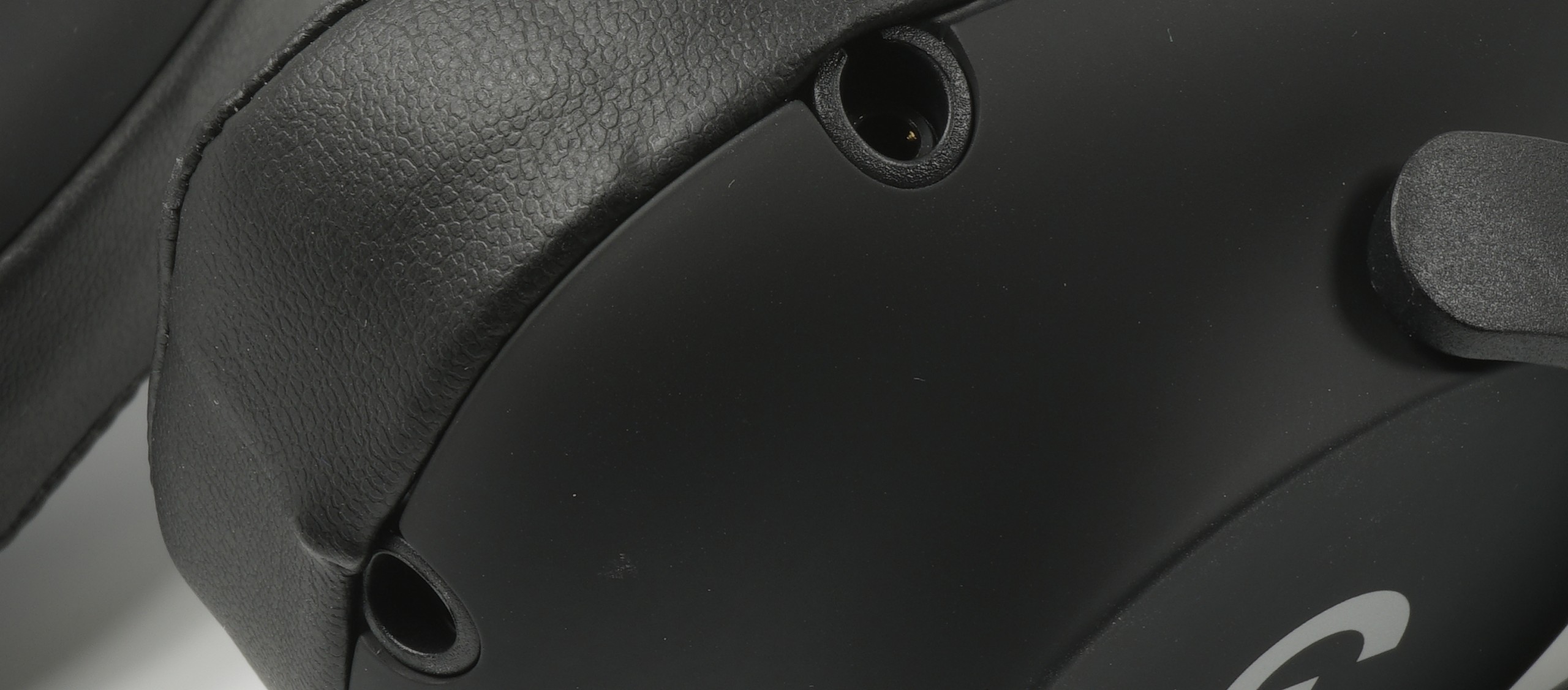
Tear Down and Sounding
Let us finally return to the double-chamber principle that has already been announced. Many manufacturers already use similar concepts, but Logitech has made some modifications and changes. At the top, in addition to the opening for the drivers, we also see two other holes that were covered with textile material dust-tight. Both openings provide an air outlet from the chamber of the driver forward.
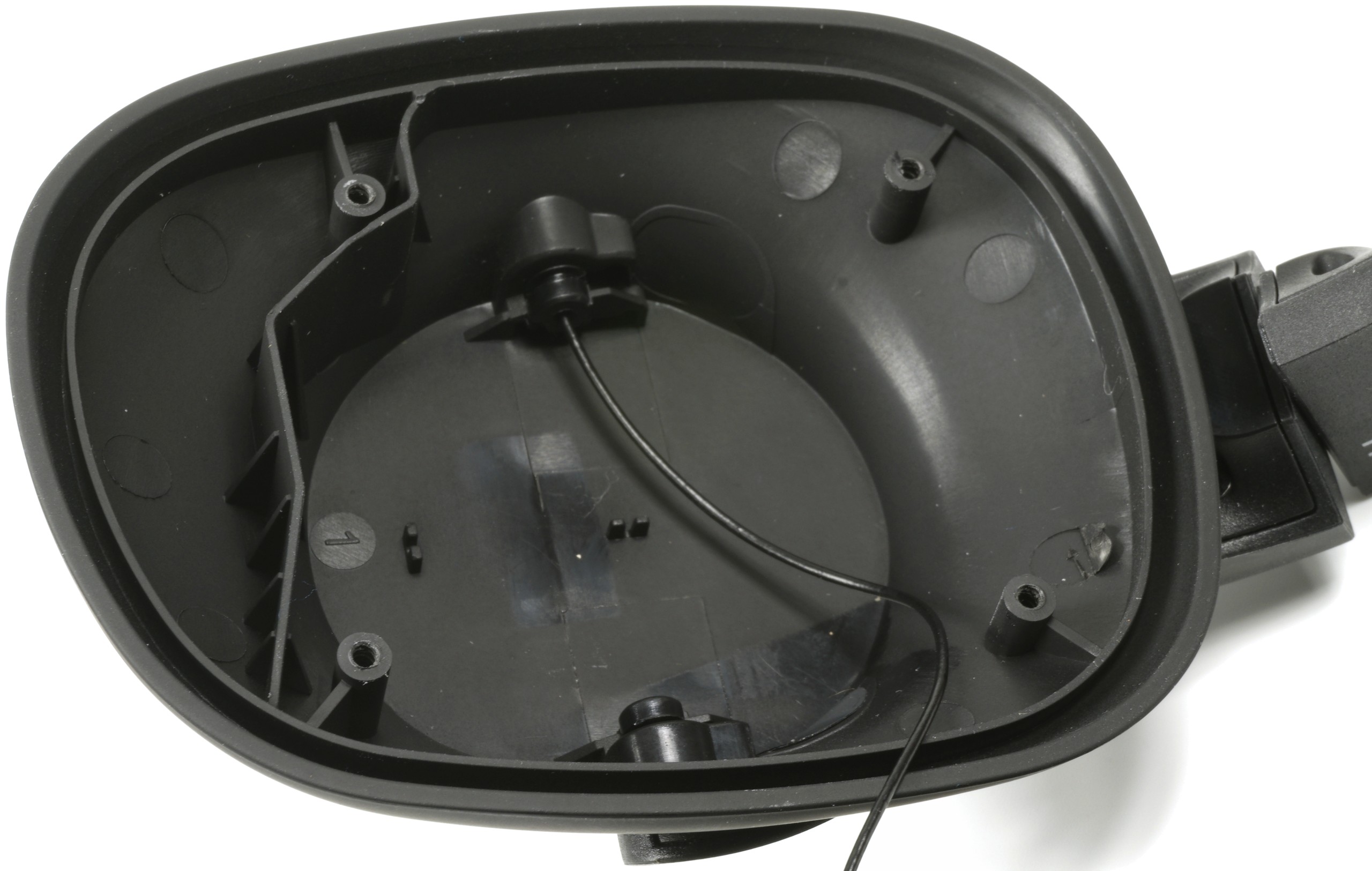 |
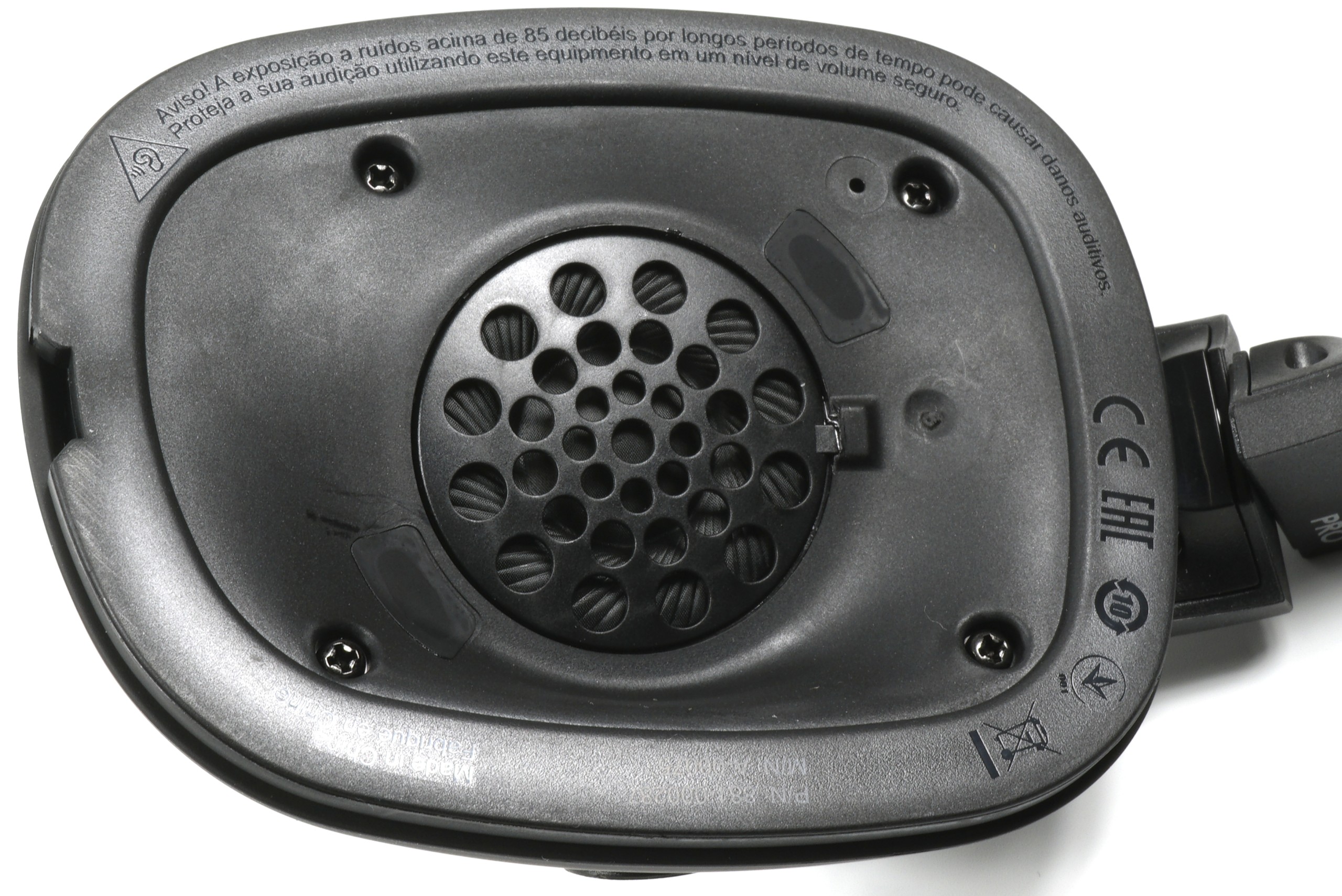 |
While the heights are radiated from the membrane of the 50 mm neodymium drivers directly to the ear, the rear opening below the drivers serves above all for the very good modeling of the lower mids and mids, which ensures a rather warm sound character. A test attenuation of the large cavity in the shell, on the other hand, makes the headphones sound quite colder, which would certainly not have been everyone's taste.
On the side, this chamber has further openings, with a larger field glued. Here the manufacturer must have honed the bass tuning. From an acoustic point of view, however, this whole "tube technology" seems to us far too set up and not really technically (as well as physically) thought through. Thus, this "sound body" should also have certain acoustic pitfalls. But we'll get there right away.
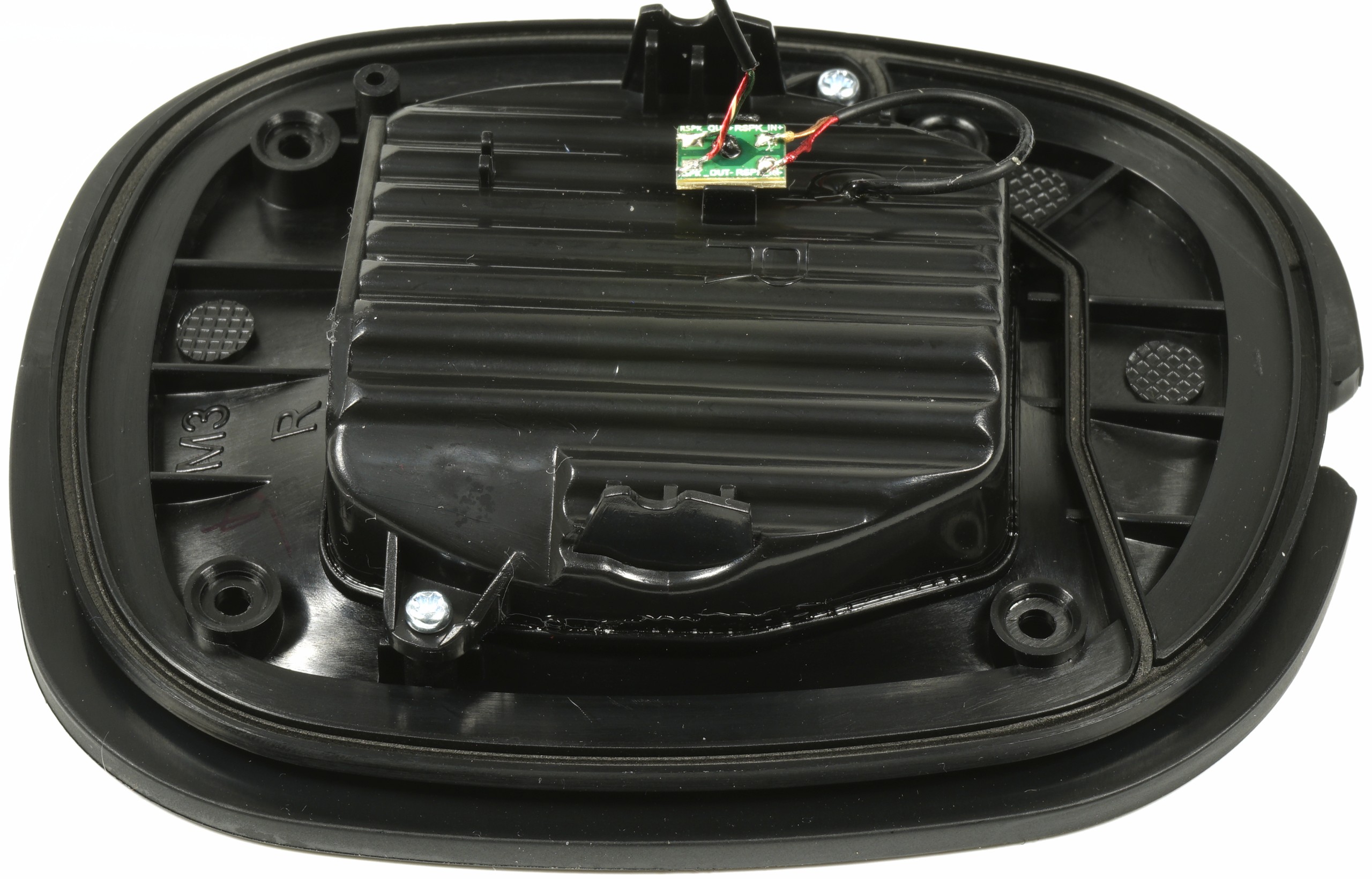 |
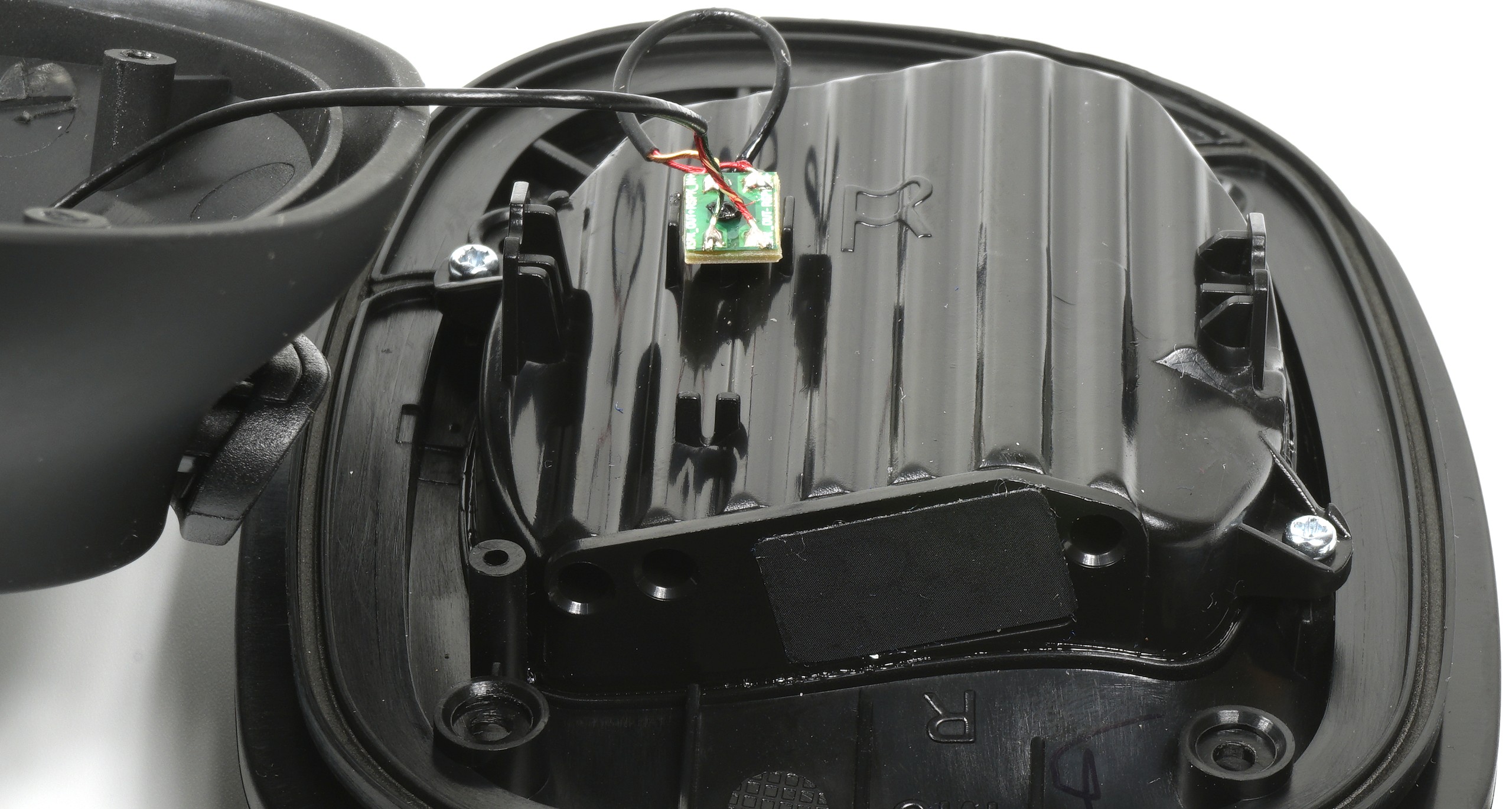 |
With 32 Ohm impedance, you follow the current trend. Soldering quality and wiring are acceptable, even if the injection moulding body inside was not cleanly deburred in places.
Microphone
The very flexible gooseneck microphone is long enough and has pop protection. The memory function for the once set position is average. This plug-in connection is also on average tight, but this should be enough against an unintentional slipping out during headbanging. We come to the sound right away from the measurements.

Microphone measurement and sound check
First, we measure the real frequency range of the microphone to meet readers' feedback. For this we use our measuring room again, but we virtually reverse the process. Of course, a true reciprocity calibration as a starting point exceeds our current possibilities and the effort far exceeds the benefits. That is why we have sought a compromise.
However, since we have a calibrated measuring microphone, a comparison measurement and the calculation of the differences can at least produce a curve that is easily usable for our purpose. So it is not the exact frequency response of the microphone, we would not presume that, but a meaningful approximation, which also underpins our subjective impression.
Measuring and audible, it can be seen that it is under approx. 100 Hz gives a stronger level drop, which is more pronounced enough. The raising of the lower middle and the upper bass make the voice appear rather warm and full. The level difference of 10 dB between 100 Hz and approx. 6 KHz modulates very rather superficial heights, which in the upper range but never sound metallic. This is mass compatible and sufficient for good voice transmission. The sensitivity goes fine, the low noise too.
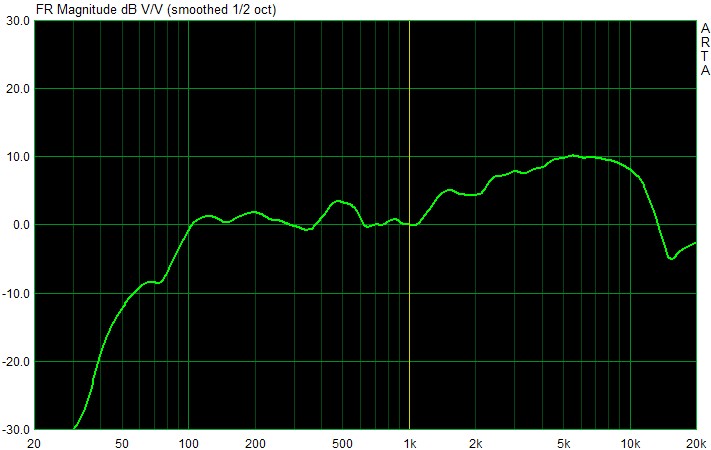
Headphone measurement
As we test, we have already explained in the basic article "Gaming Headsets: Myth, Truth and How we Test" very detailed and transparent, because with the usual audio-swirl of bass thunderstorms and high-pitched whips you can't really get any further. You have to be able to listen subjectively well and measure at the same time. Let us start with the latter.
If you look at the curve, it looks except for the small dents at approx. 350 Hz and approx. 4.5 KHz with the corresponding edges in the flanks quite well. We already see that it is not a pronounced bass bomber, but a rather neutral and thoughtfully tuned headset.
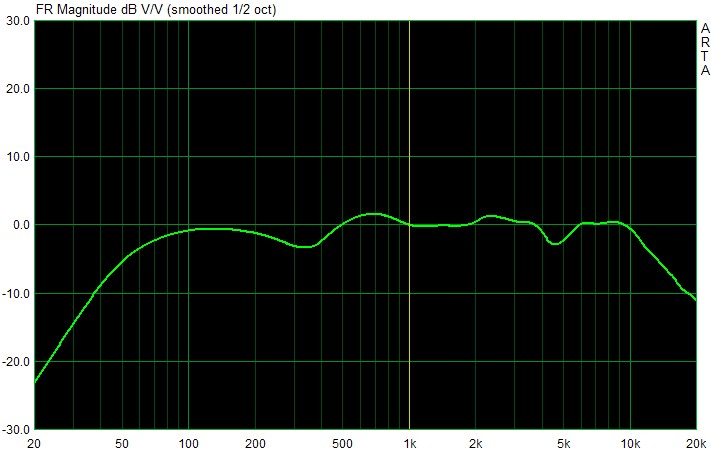
We also played something with the low bass by raising it at 64 and 32 Hz. However, the level strength and transparency are completely lost. Please do not imitate.
Subjective listening experience – Original against optimization
Let's also test subjectively what you have in the original on your ear. We used to operate the headset continuously for two days as usual at a source with a decent level, in order to give the one-game fanatics a chance. The specified 107 dB at 1 KHz can be seen one way or another, we found the headset even significantly quieter with higher supplied performance compared to the Kingston CloudX Alpha. The level strength is also audibly lower.
Bass
Test the lowest bass in the subcontraoctave (16.4 Hz to 32.7 Hz) with a recording of Bach's Toccata and Fugue in D minor (19 and 25 Hz) and the Festival Overture 1812 by Tchaikovsky (10 Hz and 12.5 Hz). The same applies to the lower ranges of the contraoctothe (32.7 to 65.4 Hz). The big bass drum (kick drum), which in the U-music is a welcome companion and usually on approx. 55 to 60 Hz, this assessment will then be rounded off.
The bass is deep and quite soft, but we now have to come back to the playful chamber of the driver. With shorter pulses and few competing sources, the principle still works quite well. But pushes e.g. the organ in the subcontrapride constant and with higher levels, the whole sound pattern softens from below and it only roars and whimpers. Even if it looks a bit complicated, it doesn't mean that it also makes sense physically.
The large bass drum, on the other hand, comes sufficiently crisp and the level strength in games is at least still acceptable for this price range. The settling behavior is satisfying and overall it can be said that the bass does not perform an outstanding solo performance, but can still convince with certain limitations.
The upper bass up to 150 Hz, in which also the Great Octave (65.4 to 130.8 Hz) is located, houses the basic language frequency of the male voice and decides very strongly on the true-to-life reproduction of male vocals.
This area, on the other hand, sounds coherent, natural and never analytical. The male vocals are reproduced rather warmly, the instruments remain largely unadulterated. Overall, the resolution is still good and does not allow single sources to perform and locate acceptable lynotal.
Frequency range
The lower middles (also basic tone range) are approx. 150 to 400 Hz. Together with the already mentioned upper bass, this area plays a very important role for the subjectively perceived heat or bass. Fullness of the sound. The basic language frequency of female voices can be found in this area.
Female vocals also come to the point well and relatively warm. The timbre of the recorded instruments is also rather warm over this entire area. The resolution, on the other hand, is rather mediocre, a pity. in gaming, however, this minor shortcoming does not matter.
The upper mids between 400 Hz and about two KHz contain a mark at a KHz, which is still considered a reference for many measurements. Unfortunately, this is often noticeable with cheaper devices, as manufacturers often try to overemphasize this frequency. This area does not play an insignificant role in gaming either, and balanced playback contributes significantly to good spatial resolution.
All instruments offer the required nuances and the resolution is also good for this price range. Many details ensure a proper stage. The subjectively perceived quality of spatial resolution is at a good level. However, some headsets and good hi-fi headphones can just offer even more here, but that would be whining at a pretty high level.
An orchestra still seems (purely subjectively) set up far enough, even the location is reasonably precise. The headset can also be music, but it's better to play with it, because the whole tuning is more in the direction of shooters and sneaking games. The headset, in turn, can do above-average.
High-pitched range
Between two and about 3.5 KHz, human hearing is most sensitive, especially since this area of the lower heights is responsible for the good overtone reproduction of the human voice. This frequency range is crucial for the recognition of a voice or instrument; in this context, one also speaks of the respective timbre.
It still sounds natural and relatively neutral. Especially the location in the game is at the level of the action at all times. Sure, it might be even better (even), but there are significantly worse headsets for similar money. In the right relation, it fits really well. The music playback stays up to date, only at full levels everything crushes a little, in places even without prior announcement.
The middle heights (3.5 to six KHz) decide on the sound or failure of the speech reproduction as a whole, because the S- and hissing (Sibilants) fall into this range. The upper heights then reach up to approx. ten KHz to move into the super high tone.
The small dent from the measuring curve is audible – if you know it exists. But when it comes to gaming, you're more likely to not notice it. Some Sibilants almost come to the ear too dominantly, yet nothing hisses. It also does not become metallic, which knows to please. Only the super high tone weakens somewhat in the brilliance, but this is due to the characteristics of the drivers.
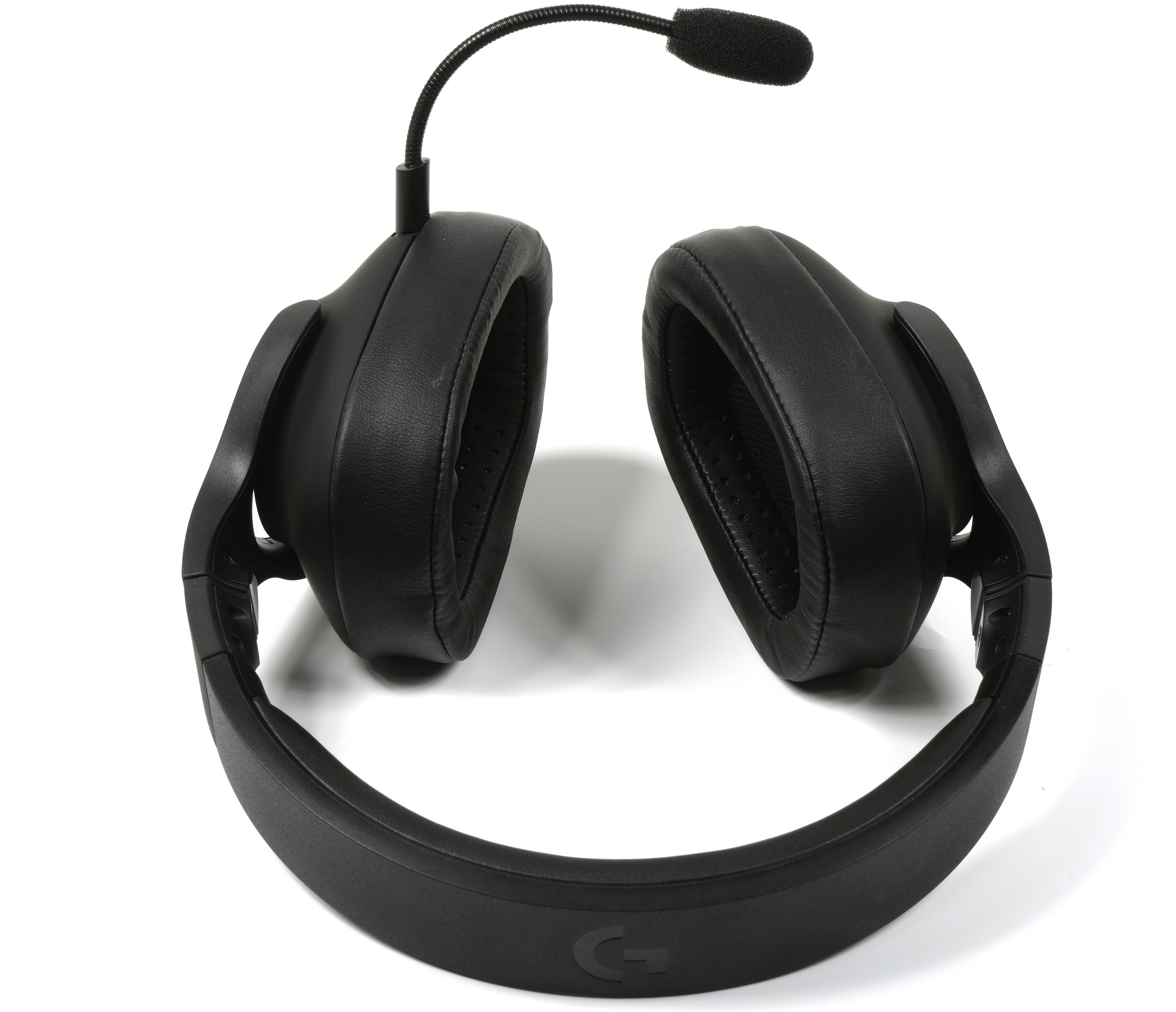
Summary and conclusion
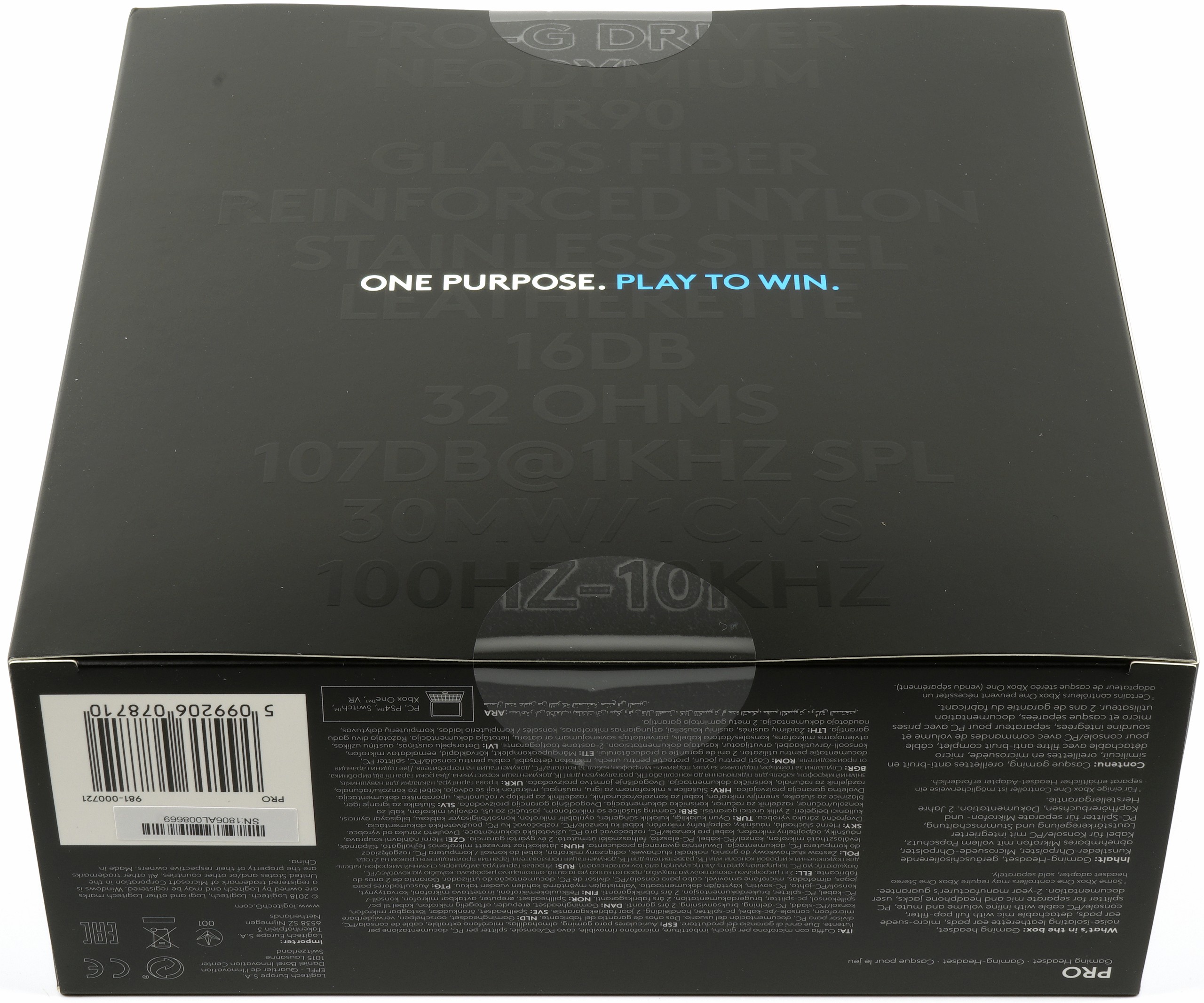 One could also have dispensed with the comical muddling inside and used more sensitive drivers as well as a sufficiently sized damping with suitable materials. The result would certainly not have been worse. Especially the smearing of the bass at very low continuous levels is the result of this acoustic experiment.
One could also have dispensed with the comical muddling inside and used more sensitive drivers as well as a sufficiently sized damping with suitable materials. The result would certainly not have been worse. Especially the smearing of the bass at very low continuous levels is the result of this acoustic experiment.
Sound, of course, it's not a crash landing and for gamers, the Logitech G Pro is even quite suitable. Nevertheless, we would have hoped for a higher sensitivity, a higher level resistance and a much more nuanced bass reproduction for this rather proud price of 99 euros. Loud doesn't have to be good, dear designers.
The material selection is still appropriate to the price. Above all, however, the small defects in the processing inside are less acceptable, especially since such a thing can also be acoustically important. Plastic doesn't have to look cheap, but we're still a bit inconclusive about the G Pro. However, the customer will not screw up the parts. But it's better.
So from this point of view everything is quite recommendable, but many smaller "but" prevent an honestly awarded award here, also in view of the price of 99 euros.
































Kommentieren